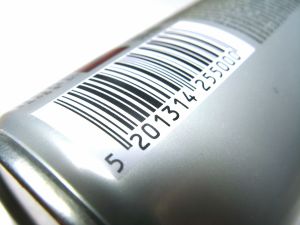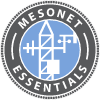Mesonet Essentials is a resource created in collaboration with members of the American Association of State Climatologists (AASC) and the national mesonet community. To learn more about the AASC vision, mission, goals, and membership opportunities, visit their website at www.stateclimate.org.
Sources of Mesonet Challenges

Throughout this Mesonet Essentials resource, we have presented numerous considerations that cover a variety of topics from the initial planning stage through the fully operational stage of your mesonet project. These considerations may present you with various challenges. For example, there are countless challenges with hardware, software, power, and communications that will beset every operational mesonet. There are also countless challenges involving people who are external to a mesonet—such as landowners, government officials, emergency managers, or university authorities—and who may offer conflicting opinions.

Challenges that Mesonet Managers Face
We asked mesonet managers to share with us their experiences and some of the specific challenges they have faced and felt should be highlighted. These are described in the following sections.
Funding
While the topic of funding is discussed in the Funding section in detail, it deserves mentioning here as well, as maintaining a sustainable budget is a high priority for mesonet managers. Most mesonets receive state funding, federal funding, or both. Because of this, these mesonets are subject to variations in funding levels from one fiscal year to the next. This year-to-year uncertainty creates challenges for mesonet managers when they are trying to plan their long-term network upgrades.
Dataset continuity
With each year of data your mesonet acquires, your archive becomes more valuable. If you have to repeatedly make changes to your network, such as changing what you are measuring, these changes essentially reset the clock on your dataset. Even changing from one sensor model to another can impact your data. Changes should be limited to those that improve the quality of your data, with the realization that it will cause a discontinuity in your data.
Unfortunately but inevitably, you will need to move a station because the site host requests that the station be removed or because you have decided that there is an advantage to move the station to another site. Regardless of the reason, bear in mind that moving a station breaks the archive record.
Communications
A mesonet may transmit its data via a variety of communication methods—such as Ethernet, phone lines, 900 MHz radios, Wi-Fi, satellite, police or emergency bands, etc.—with the current predominant communication method being cellular modem transmission over a standard provider network. Whichever method or methods your mesonet employs, it is an ongoing challenge to keep the lines of communication active between your station sites and your central computer. The more reliable your communication method, the more your stakeholders rely on your mesonet data as a deliverable. This, of course, means that your stakeholders are more negatively impacted when there are interruptions in your data stream.
Maintaining quality deliverables with limited resources
When you use high-quality equipment, you can generate high-quality data, which you can then use to produce high-quality deliverables for your stakeholders. When your resources are limited, if you are not producing quality data at the station level, or if your stations are not regularly maintained, your mesonet deliverables may become low quality and be considerably less valuable to your stakeholders. As a result, your stakeholders may choose to stop their financial support of your mesonet.
Mission creep
After all the decisions have been made as to what your mesonet will and will not do, be prepared for challenges to those decisions. For example, someone may contact you to ask for a new station site to be established at a specific location, or someone may ask you to add a sensor to measure an additional environmental phenomenon. While it is possible that a request such as either of these fits with the objectives of your mesonet, it is also possible that the request does not.
Wildlife interference
Most mesonet stations are located in rural areas—a natural habitat for small and large four-legged creatures, as well as flying creatures.
- Warm enclosures and conduit are ideal homes for mice. Mice are a considerable nuisance because they chew cabling.
- Bees make nests in and around station sites, taking advantage of the nooks and crannies in your equipment.
- Critters such as groundhogs, spiders, and insects have been known to interfere with station equipment.
- Mesonet towers are an ideal perch for hawks and owls. It is not unusual to find bird-of-prey pellets at the base of the tower and bird droppings on the station equipment. Consequently, this necessitates regular cleaning of your sensors and shelters.
- While standard cattle guard fencing can do an excellent job of keeping cattle (and other large farm animals) out of a station site, you may discover that some of these inquisitive animals will find their way in. As you can imagine, animals of this size can cause considerable damage to your equipment.
Lightning
A mesonet station provides an isolated tower, often in the middle of a large flat area, which can be ideal for attracting lightning. Even if you use lightning rods and extensive grounding, it is likely that a few stations will still be struck by lightning. Grounding well can minimize the damage, but some sensors (such as soil sensors) may still suffer damage.
Vandalism
While cases of vandalism involving mesonet stations appear to be on the decline, they still occur. Sensors that are placed higher on towers seem to be particularly attractive to hunters and vandals, possibly because they are more visible.
Site access
Occasionally, some sites may prove difficult to access in various seasons. For example, your site may experience mud in the spring and deep snow in the winter, causing roads to be inaccessible. In the summer, your site access may be limited by grazing farm animals that block your path. Severe weather (including thunderstorms, hail, and lightning) can be troublesome, especially in the summer.
Resource: A short video titled “NYS Mesonet: First Weather Tower Installation” includes a discussion regarding climate challenges and sensor mounting. This discussion begins at approximately the 1:15 mark.
Advice from Mesonet Managers
We asked mesonet managers to provide some advice to those who are just getting started with their mesonet projects. They shared the following tips:
- Inventory everything from the beginning. This metadata should include when the equipment was received, what vendor it was purchased from, how much it cost, the serial number, where it is stored, etc. Collecting this metadata from the beginning is a lot easier than trying to reconstruct it in the future.

- Don’t compromise on your siting standards. This type of compromise can have unpleasant repercussions. Focus on quality over quantity when it comes down to the number of stations, number of sensors, number of products, etc., for your mesonet.
 (Photo courtesy of Kevin Brinson, Associate State Climatologist and DEOS Director)
(Photo courtesy of Kevin Brinson, Associate State Climatologist and DEOS Director) - Be prepared for anything and everything. If it can go wrong, it probably will. Create contingency plans. As your resources will allow, plan for extra equipment inventory.
- Become an expert in all things. You’ll need to become educated on local permitting laws, electrical engineering, networking, and much, much more. Fortunately, there are many people, including your stakeholders, who can help you along the way.
- Reach out to vendors frequently. Vendors are an essential partner of every mesonet. While most information can be gleaned from sensor manuals, there’s no substitute for the knowledge that can be gained from a simple conversation with a vendor.
- Make site hosts your best friends. Site hosts are invaluable to a mesonet project, as they often freely give up valued property space for years to come. They may also be able to assist you with some of the servicing at your sites.
Rezaul Mahmood, Ryan Boyles, Kevin Brinson, Christopher Fiebrich, Stuart Foster, Ken Hubbard, David Robinson, Jeff Andresen, and Dan Leathers, "MESONETS: Mesoscale Weather and Climate Observations for the United States," Bulletin of the American Meteorological Society 98, no. 7 (2017): 1349-1361. https://journals.ametsoc.org/doi/pdf/10.1175/BAMS-D-15-00258.1

